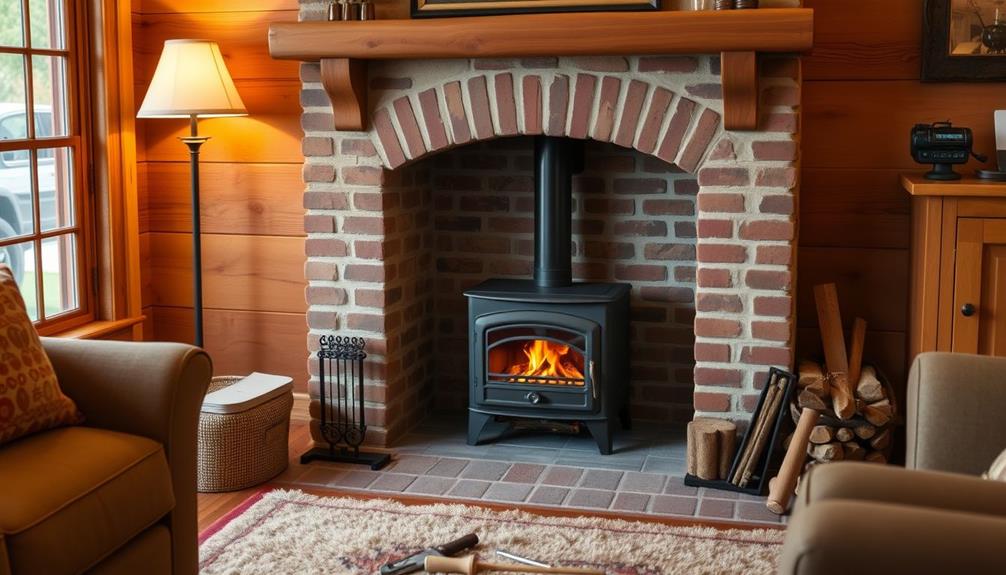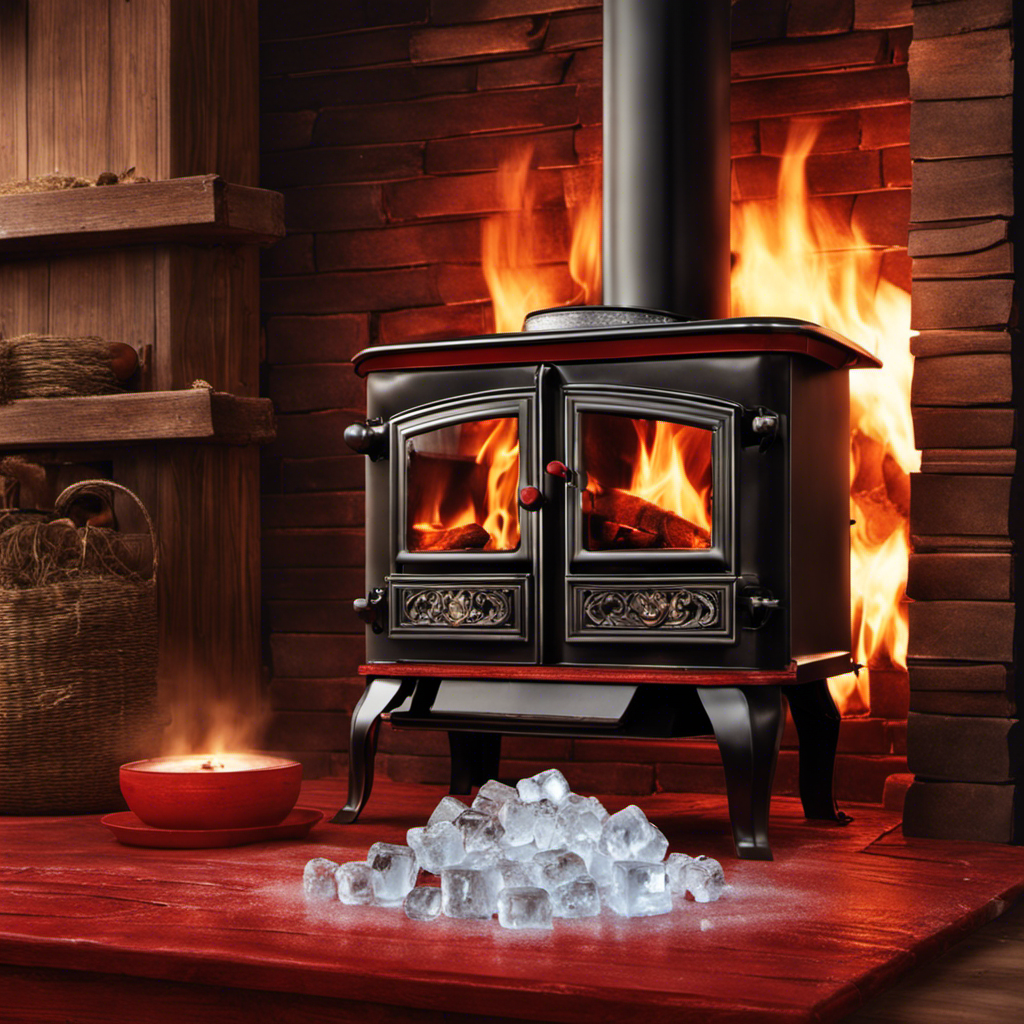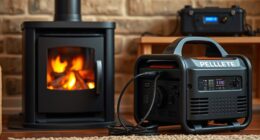As a homeowner, I understand the importance of fire safety, especially in the area behind a wood stove. It is crucial to ensure that this part of your home is resistant to fire to protect your property.
In this article, I’ll guide you through the process of understanding fire safety regulations, assessing the existing wall structure, choosing fire-resistant materials, and installing heat shields and insulation.
By following these steps, you can create a secure and fireproof wall behind your wood stove.
Key Takeaways
- Familiarize yourself with fire safety regulations and receive fire safety training
- Evaluate the current condition of the wall and reinforce the structure if necessary
- Select fire-resistant construction materials that offer both fire resistance and aesthetic qualities
- Install heat shields made of non-combustible materials and add insulation for extra protection
Understanding Fire Safety Regulations
I need to familiarize myself with the fire safety regulations to ensure that my wood stove is installed correctly. Fire safety training is essential for understanding the potential risks and hazards associated with using a wood stove.
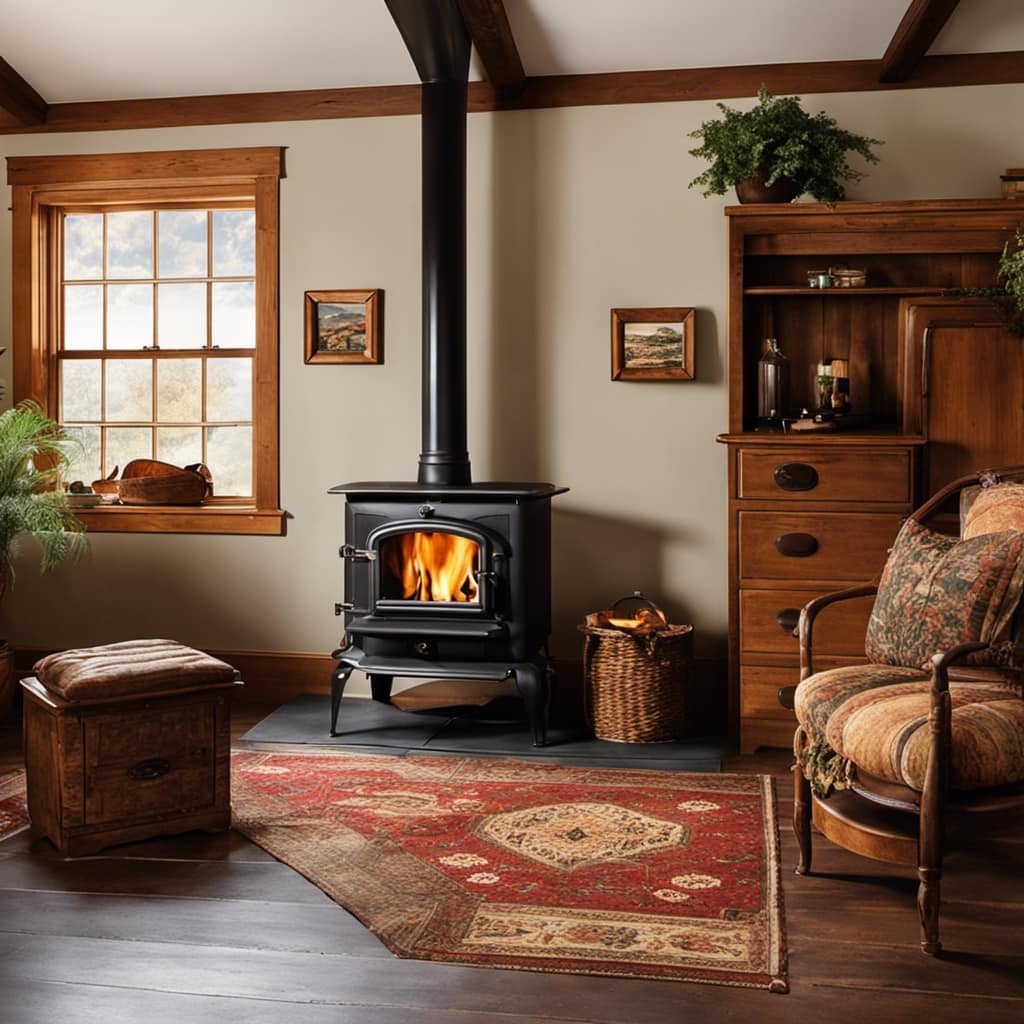
It’s crucial to know the proper procedures for installing and maintaining the stove to prevent fires and ensure the safety of my home. Additionally, understanding the different types of fire extinguishers is vital. There are various extinguisher types, such as water, foam, CO2, and dry chemical, each designed to combat specific types of fires.
Knowing which type of extinguisher to use in different situations can make a significant difference in effectively extinguishing a fire. By familiarizing myself with fire safety regulations and knowing the appropriate fire extinguisher types, I can create a safer environment for using my wood stove.
Assessing the Existing Wall Structure
I’m evaluating the wall’s structure to determine if any modifications or reinforcements are necessary. The first step in evaluating suitability is to assess the current condition of the wall.
I carefully examine the materials used, their thickness, and the overall stability of the structure. I also check for any signs of damage, such as cracks or weaknesses, that could compromise its ability to withstand the heat generated by a wood stove.
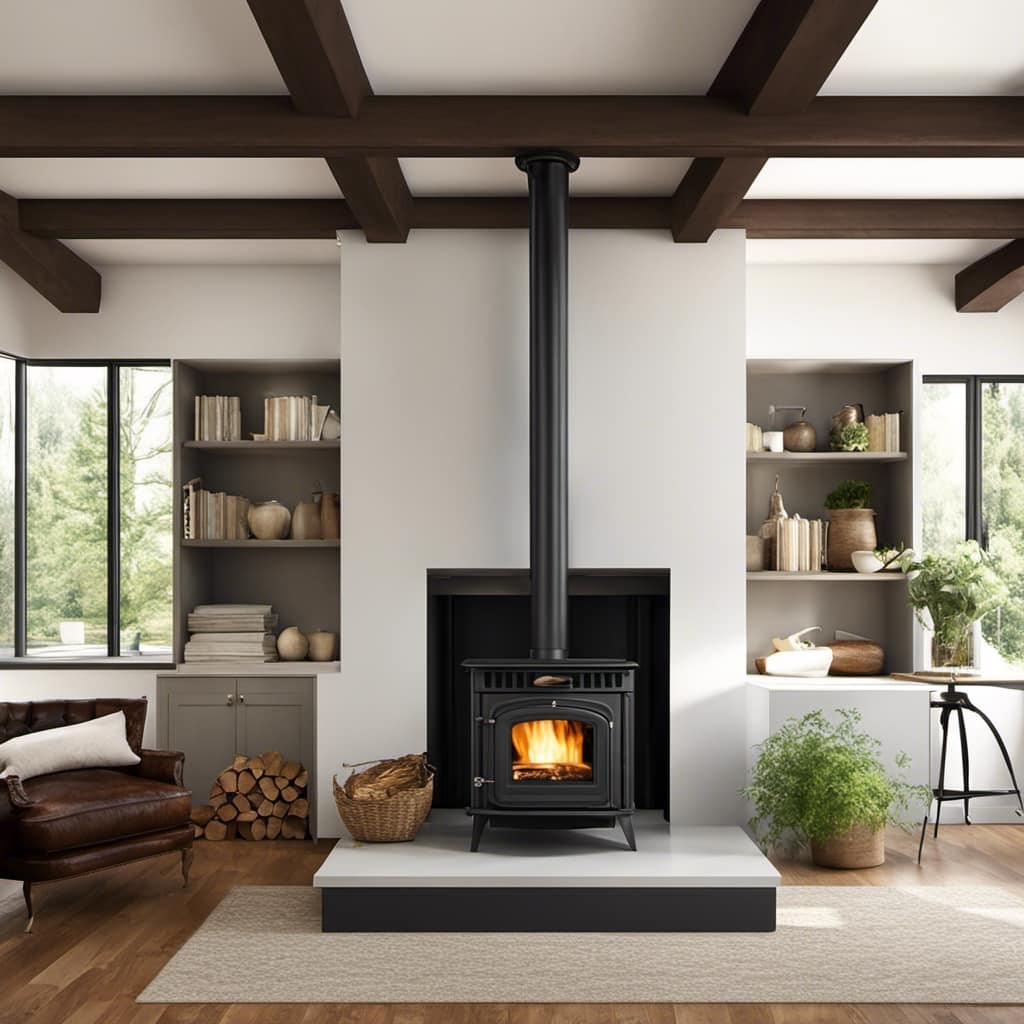
If I find any areas that are lacking in strength or stability, I’ll then proceed with reinforcing the structure. This may involve adding additional support beams, reinforcing the existing framework, or even replacing certain sections with more durable materials.
By reinforcing the wall, we can ensure its ability to withstand the extreme temperatures and prevent any potential fire hazards.
Now, let’s move on to the next step, which is choosing fire resistant materials.
Choosing Fire Resistant Materials
How can I ensure that the materials I choose are both fire resistant and aesthetically pleasing? When it comes to fireproofing techniques, selecting the right fire resistant construction materials is crucial. Not only do they need to withstand high temperatures, but they should also blend seamlessly with the overall design of the space. To achieve this balance, I have compiled a table showcasing some commonly used fire resistant materials and their aesthetic qualities:
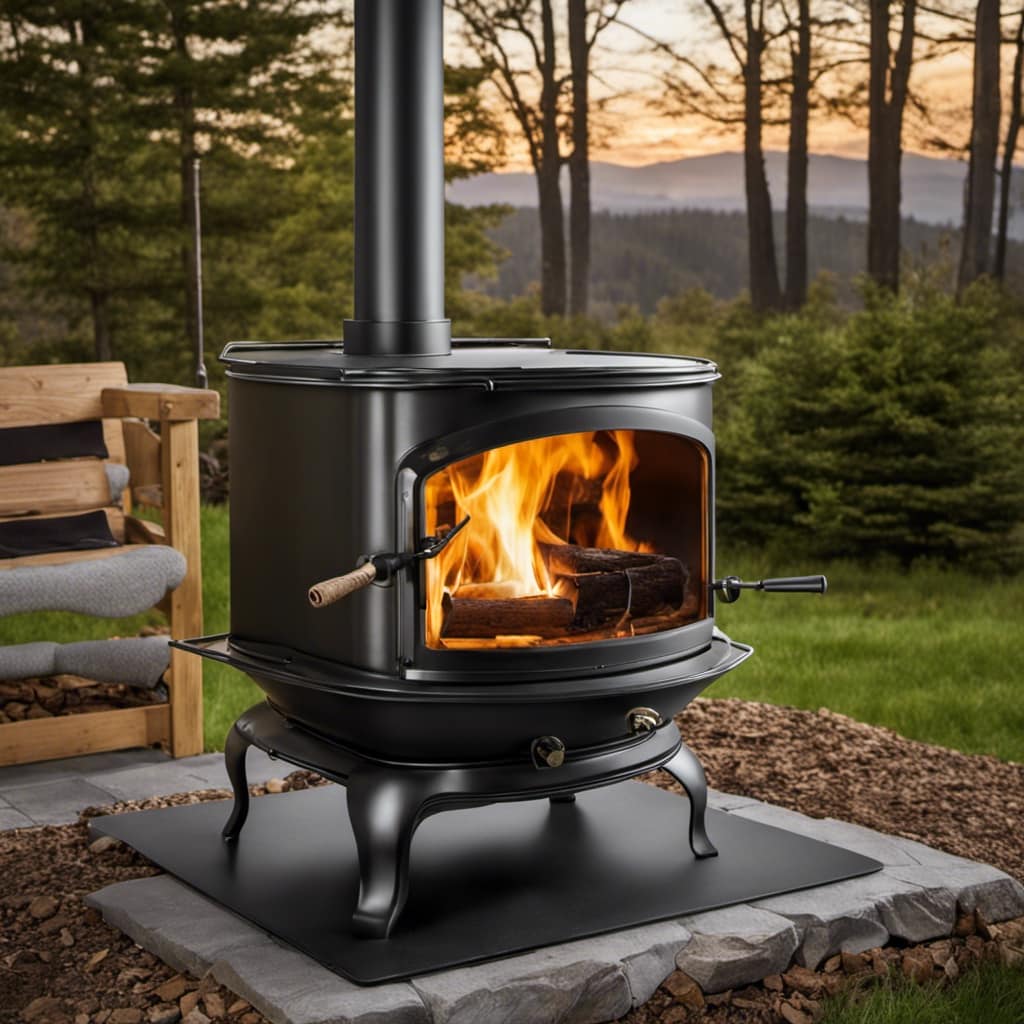
| Material | Aesthetic Qualities |
|---|---|
| Fire-rated drywall | Smooth finish, paintable |
| Ceramic tiles | Variety of colors and patterns |
| Metal cladding | Sleek and modern appearance |
| Stone veneer | Natural and rustic look |
Installing Heat Shields and Insulation
One option for improving fire protection in my space is to install heat shields and insulation. When it comes to fire safety, proper ventilation and safety precautions are of utmost importance. Here are some key points to consider:
Proper Ventilation: Ensuring adequate airflow around the heat source is crucial. This helps dissipate excess heat and prevents the buildup of flammable gases. It’s recommended to have a minimum clearance between the heat source and any combustible materials.
Heat Shields: Installing heat shields behind the wood stove acts as a barrier, reducing the transfer of heat to the surrounding walls. Heat shields should be made of non-combustible materials and be properly spaced from the wall to allow for air circulation.
Insulation: Adding insulation to the wall behind the wood stove can provide an extra layer of protection. Insulation materials with high fire resistance, such as rock wool or ceramic fiber, can help slow down the spread of flames.
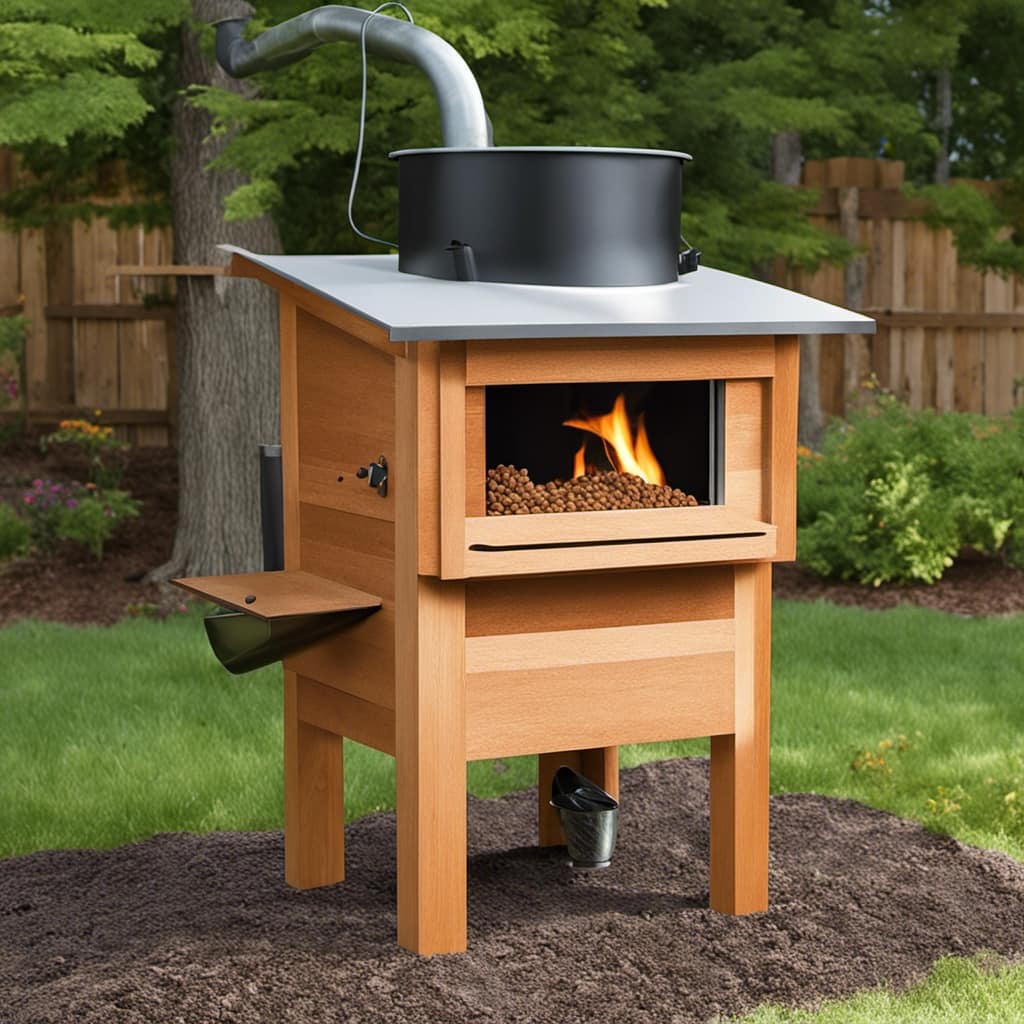
Safety Precautions: Always follow manufacturer instructions and local building codes when installing heat shields and insulation. Regularly clean and maintain the wood stove to minimize the risk of fire. Have a fire extinguisher nearby and ensure smoke detectors are properly functioning.
Maintaining and Regularly Inspecting the Fireproofed Wall
I regularly inspect the fireproofed wall to ensure its integrity and safety. Proper ventilation is of utmost importance when it comes to fireproofing a wall. Without adequate airflow, heat can build up, causing the materials to deteriorate and potentially leading to a fire hazard.
One common mistake to avoid is using improper fireproofing materials. It’s crucial to select products that are specifically designed for fire protection and have been tested and certified to meet safety standards.
Another mistake is neglecting to properly seal any gaps or cracks in the wall. These openings can allow heat and flames to penetrate the fireproofing, compromising its effectiveness.
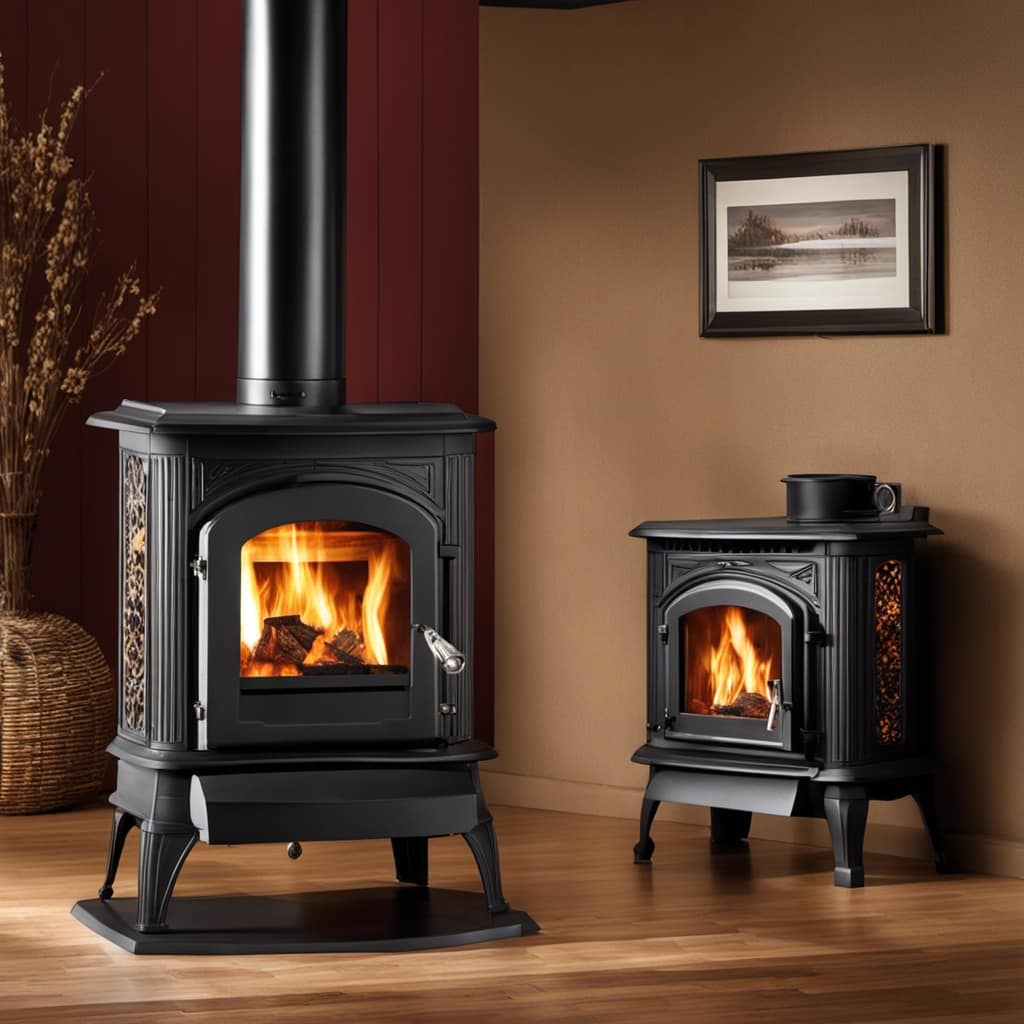
Regular inspections are essential to identify any signs of damage or wear and to promptly address them to maintain the wall’s fire resistance.
Can the method for replacing a tile behind a wood stove also be used for fire-proofing a wall behind a wood stove?
Yes, the method to replace tile behind wood stove can also be used for fire-proofing a wall behind a wood stove. It is essential to ensure that the materials used are fire-resistant and appropriate for the high temperatures generated by the stove. Proper installation is key for safety.
Frequently Asked Questions
How Much Does It Typically Cost to Fireproof a Wall Behind a Wood Stove?
Fireproofing a wall behind a wood stove can cost anywhere from $500 to $2000, depending on the materials used. Different methods include using fire-resistant drywall or installing a ceramic tile heat shield.
Can I Use Any Type of Wood Stove With a Fireproofed Wall, or Are There Specific Requirements?
I’m not sure about using any type of wood stove with a fireproofed wall. There may be specific requirements for wood stove safety. Fireproofing a wall has many benefits, such as reducing the risk of fire spreading.
Are There Any Specific Building Codes or Regulations I Need to Follow When Fireproofing a Wall Behind a Wood Stove?
Building codes require fireproofing a wall behind a wood stove to prevent potential risks. Not following regulations can lead to fire hazards. It’s crucial to adhere to specific requirements for the safety of your home.
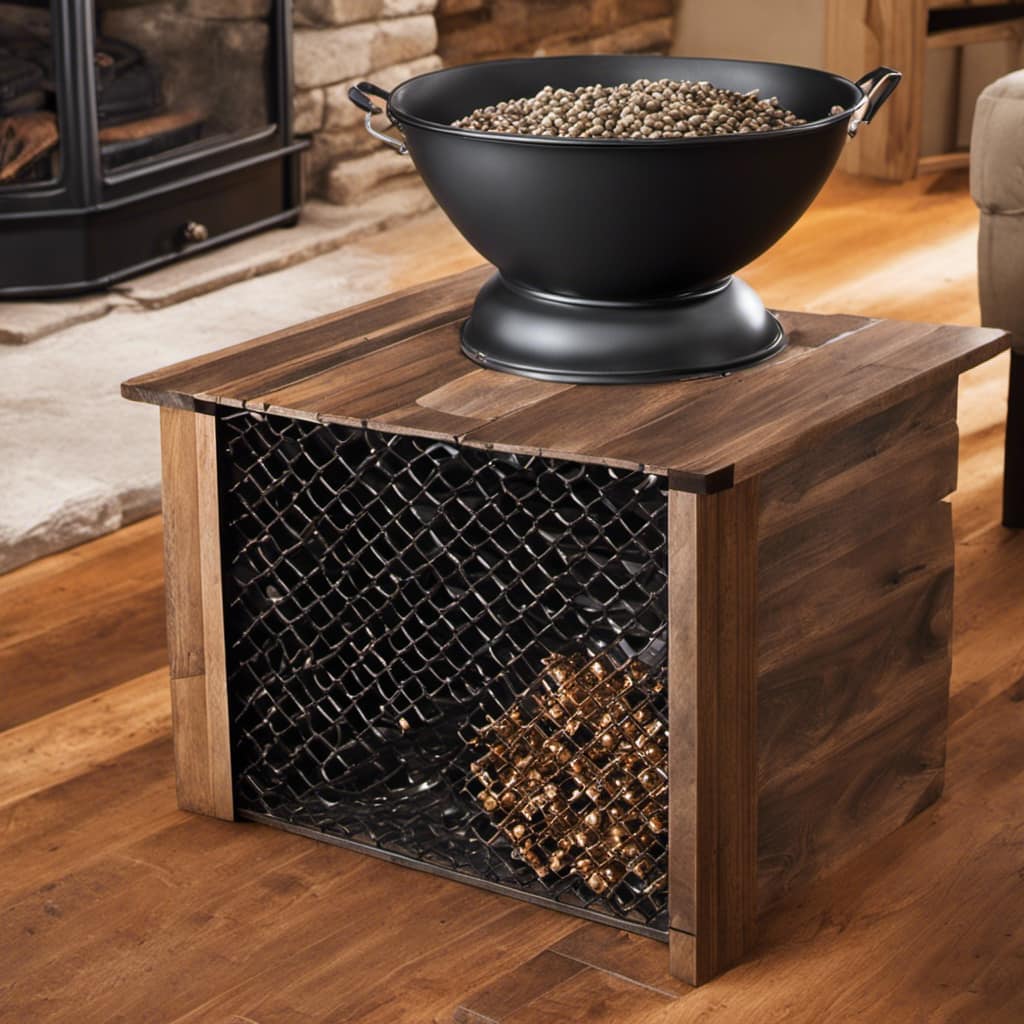
Can I Install a Heat Shield on a Wall That Is Already Fireproofed, or Is It Only Necessary During the Initial Installation?
Installing a heat shield on a fireproofed wall is not necessary, but it adds an extra layer of protection. The heat shield installation process is straightforward and offers increased safety by reducing the risk of heat transfer to combustible materials.
How Often Should I Inspect and Maintain the Fireproofed Wall to Ensure Its Effectiveness?
I inspect and maintain the fireproofed wall behind my wood stove regularly to ensure its effectiveness. I check for signs of damage, such as cracks or discoloration, and address them promptly to maintain the wall’s fireproofing capabilities.
Conclusion
In conclusion, individuals can fireproof the wall behind their wood stove by following fire safety regulations and properly assessing the existing wall structure. Choosing fire-resistant materials and installing heat shields and insulation further enhance the wall’s protection. Regular maintenance and inspections ensure the fireproofing remains effective.
By implementing these measures, homeowners can safeguard their homes with a sturdy, secure, and fire-resistant wall.
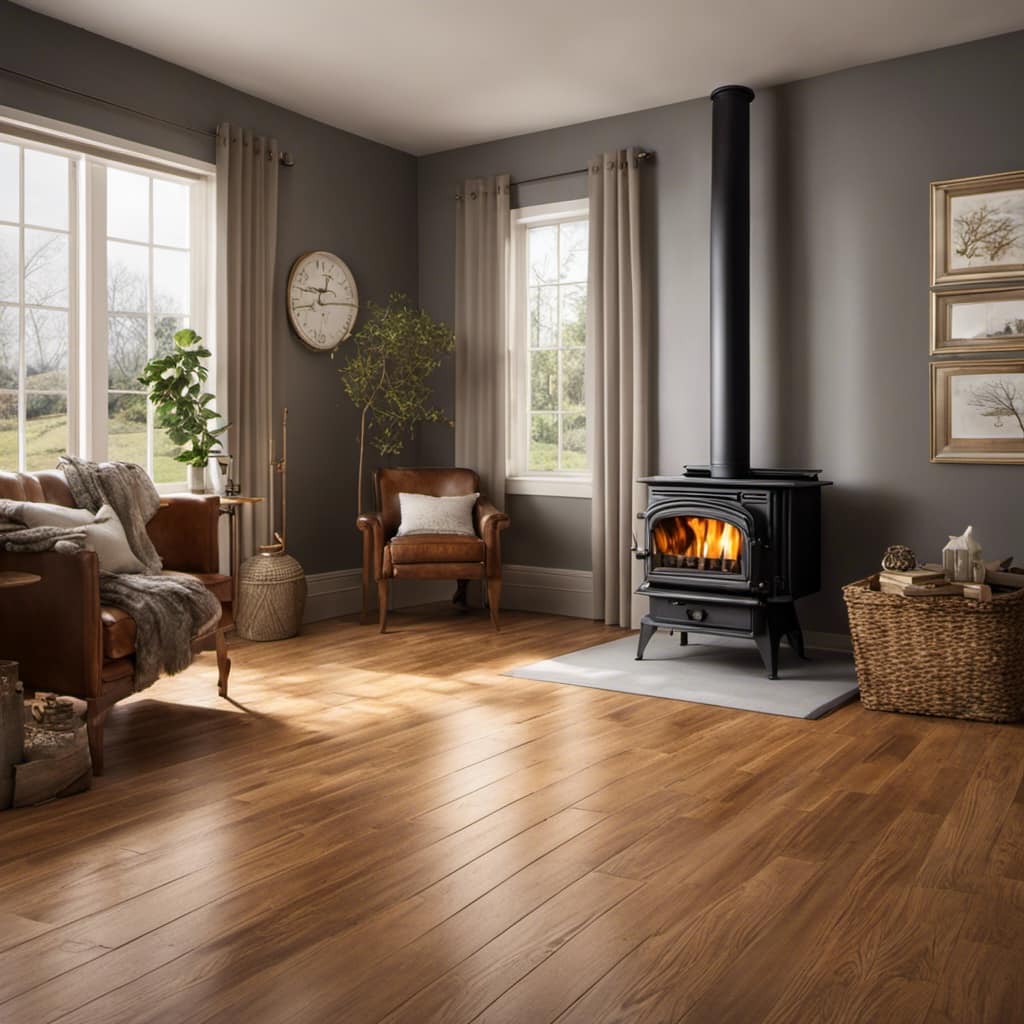
Growing up surrounded by the vast beauty of nature, Sierra was always drawn to the call of the wild. While others sought the comfort of the familiar, she ventured out, embracing the unpredictable and finding stories in the heartbeat of nature.
At the epicenter of every remarkable venture lies a dynamic team—a fusion of diverse talents, visions, and passions. The essence of Best Small Wood Stoves is crafted and refined by such a trio: Sierra, Logan, and Terra. Their collective expertise has transformed the platform into a leading authority on small wood stoves, radiating warmth and knowledge in equal measure.




